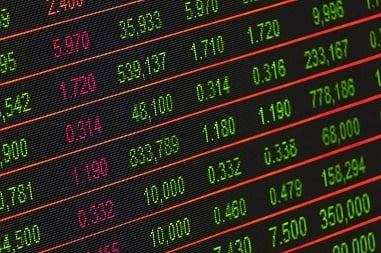With the Fed talking rate rises again, it may be worth reconsidering EMD
Emerging market debt may be on the cusp of re-bounding, according to Schroders’ co-head of emerging markets debt relative, James Barrineau.
On Thursday this week, the Federal Open Markets Committee (FOMC) in the US will again discuss when it will begin to increase the country’s interest rates. Barrineau suggests this meeting could mark an inflection point for emerging market debt, which has remained weak due to a lack of clarity around the Federal Reserve’s (Fed) interest rate policy.
The emerging market debt specialist refers to the FOMC’s January statement, in which it said it “can be patient in beginning to normalize the stance of monetary policy”. Barrineau says opinions are divided on whether the Fed will now remove the word “patient” from its commentary – implying a June hike, or if it will keep it in – implying a September timeframe.

However, Barrineau says whatever the outcome, the increase in market volatility and the “relentless rise of the US dollar” reflect the expectation that there will be some degree of tightening.
He adds the length of the prospective tightening is the most pertinent point.
Barrineau said: “The Fed has been at pains to suggest a shallow cycle; one that will not involve consecutive meeting hikes.
“This would be more supportive for emerging market debt, and the economic outlook strongly supports the view. Outside of the strength in US employment, economic data has broadly disappointed. We believe that the market weakness in emerging market debt is laying the ground for better times in the future; provided our thesis is correct that the Fed will be slow in tightening rates.”
Barrineau says history backs his case, with past “well-telegraphed” cycles eventually leading to emerging market debt rallies, once markets reflect the initial risks of tighter policy.
Of course, there is a significant divergence between the different economies which fall within the emerging market debt bracket. Many of them are facing severe economic difficulties, making a “sell” an easy decision.
One example is Brazil, with weak growth, high inflation and questions over the ability of the government to implement fiscal reform. Barrineau says these factors have led to poor sentiment, despite interest rates approaching 13%. Turkey is cited as another, with a looming election and increasing political influence on markets.
Russia meanwhile has been a better performer and Barrineau says it is currently an overweight in the Schroder portfolios. The central bank cut rates this week, but the easing was in line with, or even more conservative, than expectations. The huge fall in the rouble, and widespread underexposure to the currency are helping to boost the effectiveness of the rate cuts as volatility steadily subsides.
The other main portfolio overweight is Mexico, says Barrineau. The government took a step to steady currency volatility this week, and Barrineau says he expects the central bank to hike rates as soon as the Fed does. Even in a weak market, Mexico should outperform the rest of the asset class.
In conclusion Barrineau says, provided those investing in emerging market debt are attuned to the structural and fundamental differences within emerging markets, he believes the next few weeks could prove a turning point in stimulating depressed emerging market debt valuations.
